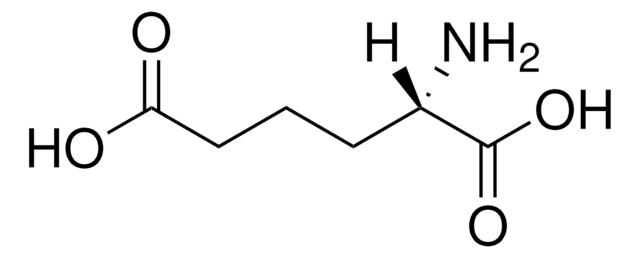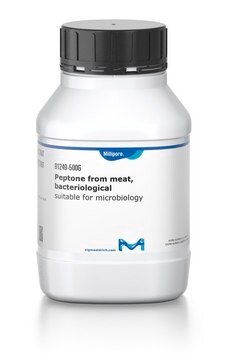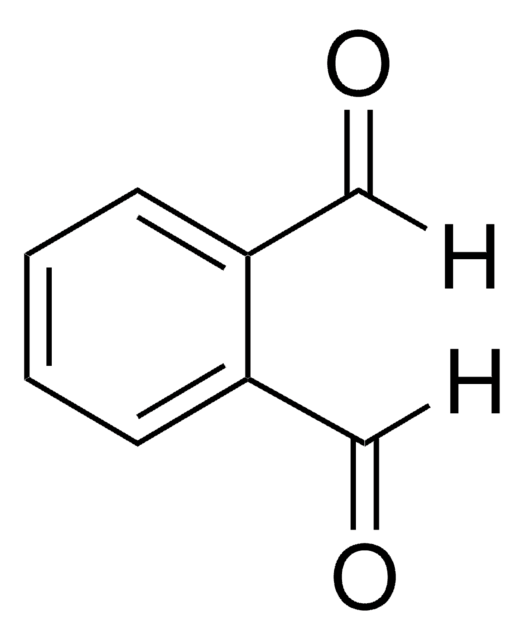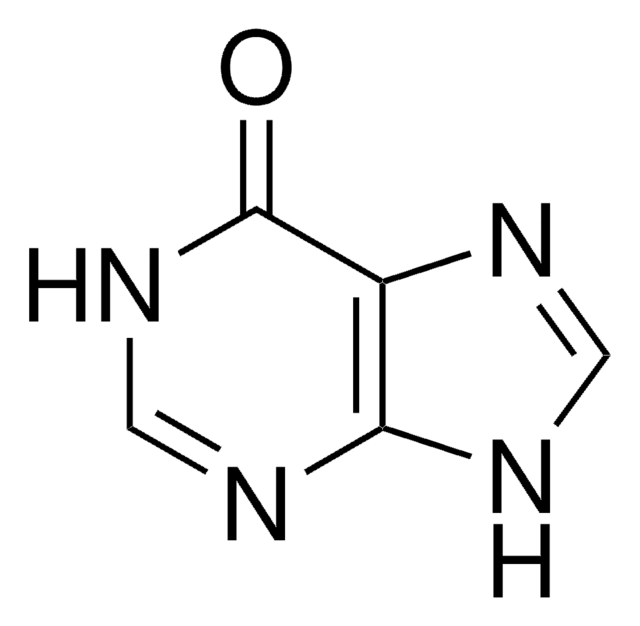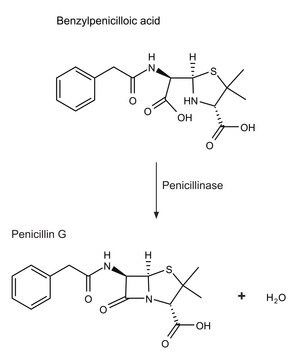A0637
DL-2-Aminoadipic acid
≥99% (TLC), powder, gliotoxic
Sinonimo/i:
DL-α-Aminoadipic acid
Autenticatiper visualizzare i prezzi riservati alla tua organizzazione & contrattuali
About This Item
Formula condensata:
HO2C(CH2)3CH(NH2)CO2H
Numero CAS:
Peso molecolare:
161.16
Numero CE:
Numero MDL:
Codice UNSPSC:
12352106
ID PubChem:
NACRES:
NA.32
Prodotti consigliati
Nome del prodotto
DL-2-Aminoadipic acid, ≥99%
Livello qualitativo
Saggio
≥99%
Stato
powder
Punto di fusione
196-198 °C (lit.)
Temperatura di conservazione
2-8°C
Stringa SMILE
NC(CCCC(O)=O)C(O)=O
InChI
1S/C6H11NO4/c7-4(6(10)11)2-1-3-5(8)9/h4H,1-3,7H2,(H,8,9)(H,10,11)
OYIFNHCXNCRBQI-UHFFFAOYSA-N
Informazioni sul gene
rat ... Grin2b(24410)
Cerchi prodotti simili? Visita Guida al confronto tra prodotti
Applicazioni
DL-2-Aminoadipic acid (AAA) has been used as an astrotoxin to kill astrocytes that prevent efficient integration of transplanted cells into the retina. It has also been used as a gliotoxin to study the effect of astrocytic swelling on the tortuosity.
Azioni biochim/fisiol
DL-2-Aminoadipic acid (AAA) is a six-carbon homolog of glutamate and a gliotoxic compound. It is generally used to considerably reduce the number of astroglia in cerebellar cultures that acts as a model to study the mechanisms of a-aminoadipic acid induced glial toxicity.
Avvertenze
Warning
Indicazioni di pericolo
Consigli di prudenza
Classi di pericolo
Skin Sens. 1
Codice della classe di stoccaggio
11 - Combustible Solids
Classe di pericolosità dell'acqua (WGK)
WGK 3
Punto d’infiammabilità (°F)
Not applicable
Punto d’infiammabilità (°C)
Not applicable
Scegli una delle versioni più recenti:
Possiedi già questo prodotto?
I documenti relativi ai prodotti acquistati recentemente sono disponibili nell’Archivio dei documenti.
I clienti hanno visto anche
Bhagyalaxmi S Ganesh et al.
PloS one, 6(3), e18305-e18305 (2011-04-13)
Reactive gliosis is a hallmark of many retinal neurodegenerative conditions, including glaucoma. Although a majority of studies to date have concentrated on reactive gliosis in the optic nerve head, very few studies have been initiated to investigate the role of
Saadet Mercimek-Mahmutoglu et al.
Pediatrics, 129(5), e1368-e1372 (2012-04-25)
Pyridoxine-dependent epilepsy (PDE) was first described in 1954. The ALDH7A1 gene mutations resulting in α-aminoadipic semialdehyde dehydrogenase deficiency as a cause of PDE was identified only in 2005. Neonatal epileptic encephalopathy is the presenting feature in >50% of patients with
H Bräuner-Osborne et al.
Journal of medicinal chemistry, 39(16), 3188-3194 (1996-08-02)
The homologous series of acidic amino acids, ranging from aspartic acid (1) to 2-aminosuberic acid (5), and the corresponding series of 3-isoxazolol bioisosteres of these amino acids, ranging from (RS)-2-amino-2-(3-hydroxy-5-methylisoxazol-4-yl)acetic acid (AMAA, 6) to (RS)-2-amino-6-(3-hydroxy-5-methylisoxazol-4-yl)hexanoic acid (10), were tested as
Gliotoxin-induced swelling of astrocytes hinders diffusion in brain extracellular space via formation of dead-space microdomains
Sherpa AD, et al.
Glia, 62(7), 1053-1065 (2014)
The toxic effect of sodium glutamate and DL-$\alpha$-aminoadipic acid on rat retina: Changes in high affinity uptake of putative transmitters
Karlsen RL, et al.
Journal of Neurochemistry, 31(4), 1055-1061 (1978)
Il team dei nostri ricercatori vanta grande esperienza in tutte le aree della ricerca quali Life Science, scienza dei materiali, sintesi chimica, cromatografia, discipline analitiche, ecc..
Contatta l'Assistenza Tecnica.